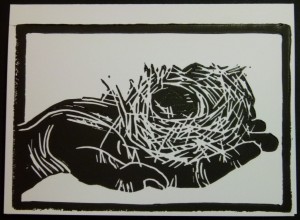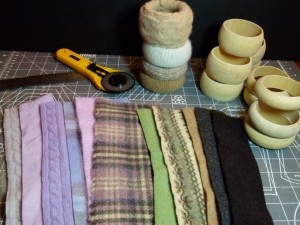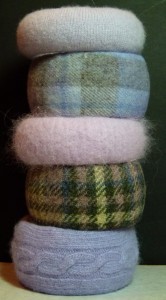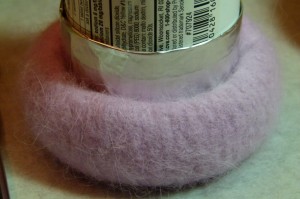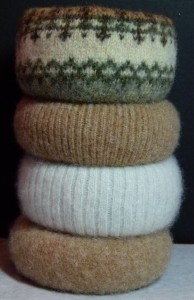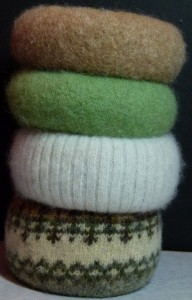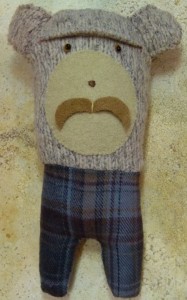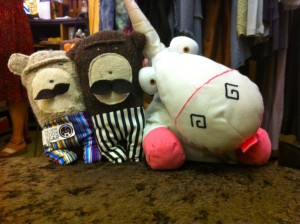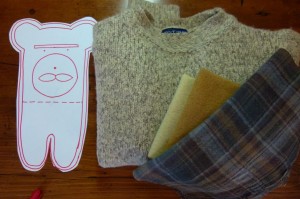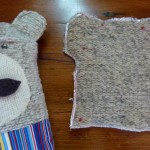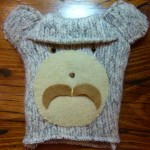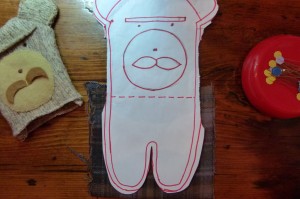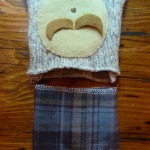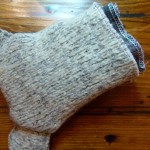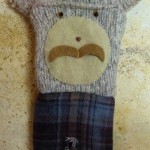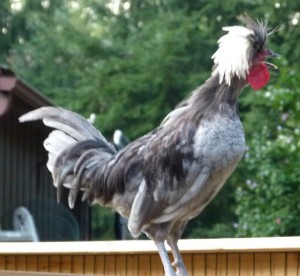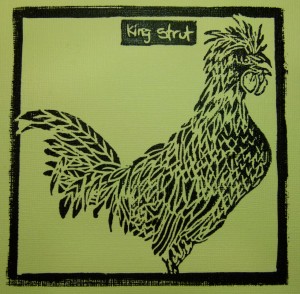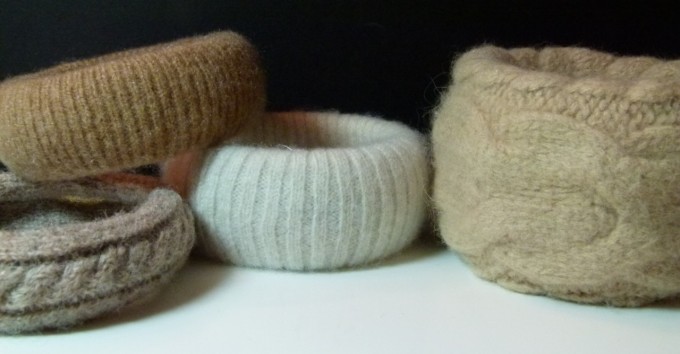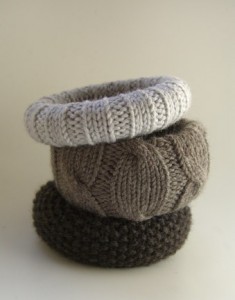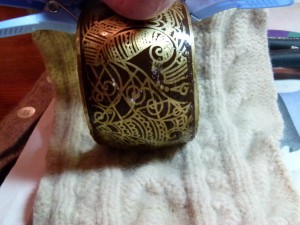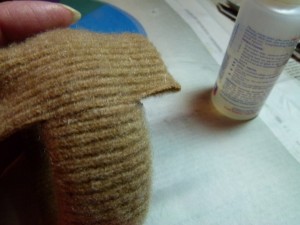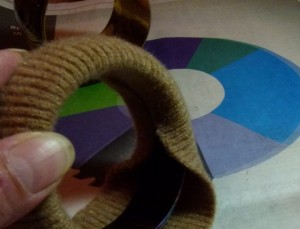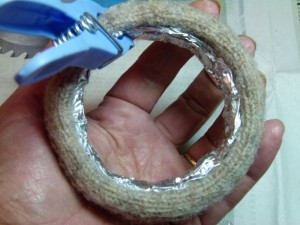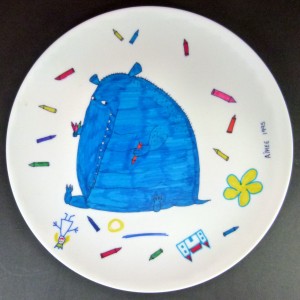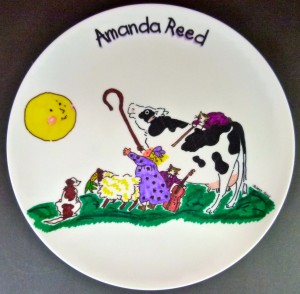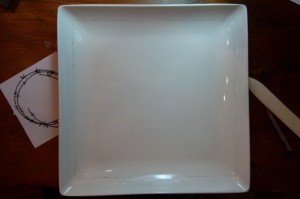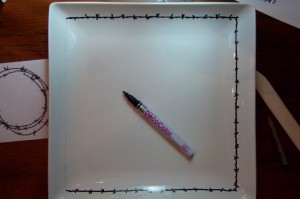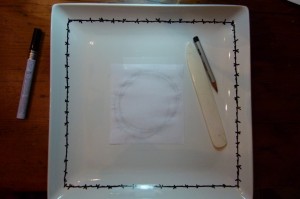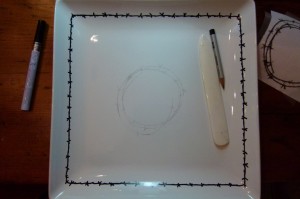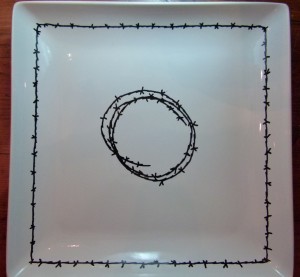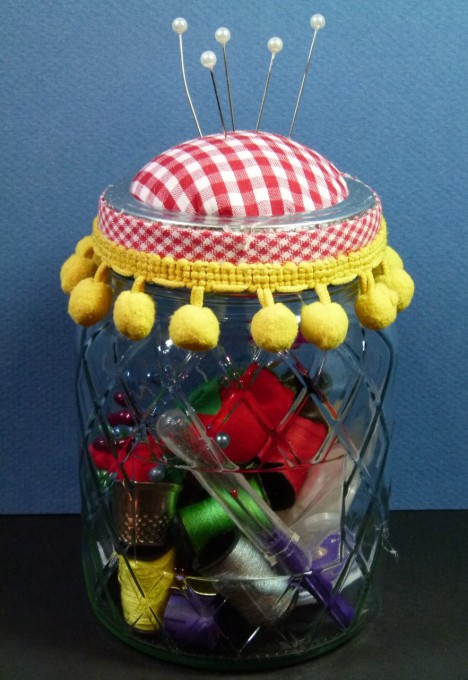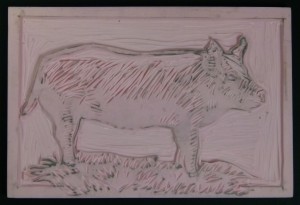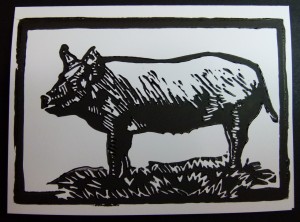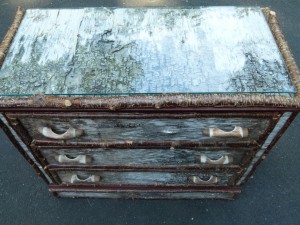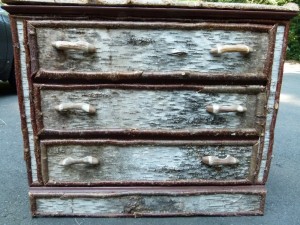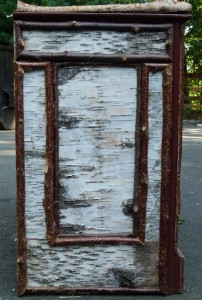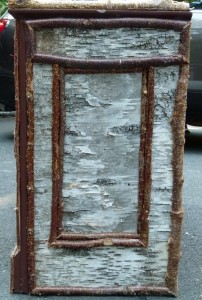There was an article in the Autumn 2011 issue of GreenCraft Magazine about making jewelry from vintage rulers. As soon as I saw it I knew I had to try making my own. I don’t make jewelry very much; I figure I’ve got enough crafts to do already, but I do own the basic equipment needed, and do it on rare occasions.
This jewelry brought me right back to my childhood. My dad was a carpenter his entire working life, and as a child I remember he almost always carried around a folding, accordion-style wooden rulers. I vaguely recall that his back pants pocket even wore out around the shape of the ruler, just as a cowboy’s jeans might wear out around his can of chewing tobacco in his back pocket.
I hopped on eBay and quickly found a cheap wooden ruler just like my dad’s, and also an old fabric wind-up tape measure. I think I paid $5 for each of them. I looked through my box of jewelry making supplies, and while I was waiting for the packages to come, I stocked up on a few more things I thought I might need.
Once everything arrived I gathered all my supplies, including my portable vice. Since I don’t have a workbench, I secured my vice to a big piece of plywood. this works well for me because it’s portable . I stick it down on a dishtowel so it doesn’t scratch any surfaces. I also gathered my dremel drill with my attachment box.

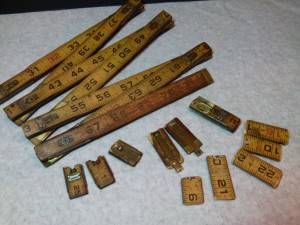

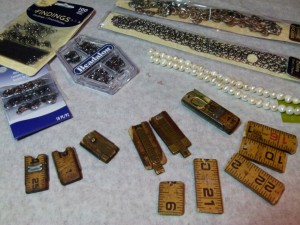
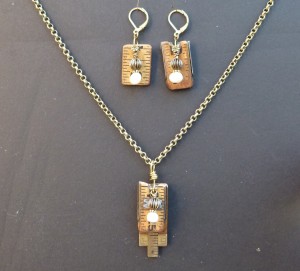
Now I’m not here to teach you how to make jewelry. I just wanted to show you what’s possible with an old ruler and a few beads. Are those age spots on my face?
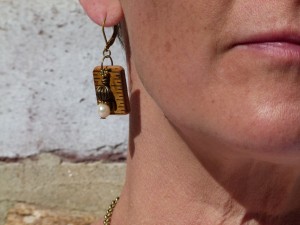
And we’re just going to completely ignore the fact that in my ever-increasing age the skin on my neck is now starting to resemble a plucked chicken.
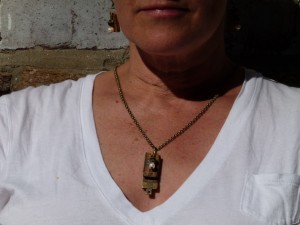
Vintage Ruler Necklace
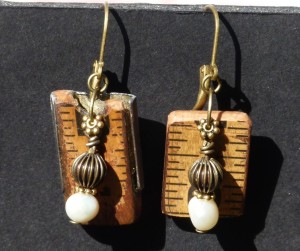
The Finished Vintage Ruler Earrings
Then, since I loved the way this set came out I made some more.This time I added some cool brass components’s with a yellow patina I got on an Etsy shop and some brass hearts I found at my local bead store along with pearls.

And to finish either set off I made a bracelet to go with them.
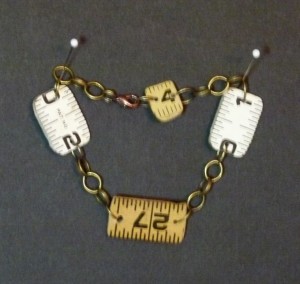
And then for kicks I made a bangle bracelet with some of the fabric tape measure. First I took a page out of a carpentry book I had to use for covering the bracelet. It’s something most people probably wouldn’t notice, but I thought it was cool to try and tie the tape measure back to construction with something like that. I wrapped one of the large wooden bangle bracelets I had leftover from my Sweater Covered Bangle Bracelet project with strips of the book page I’d cut up, using matte medium to adhere the pieces. (you can use Modge Podge or anything similar to that.). When that was dry I used a high-tack, quick-drying, clear craft glue to adhere a strip of the fabric tape measure around the middle of the bracelet. When that was dry I first used a matte varnish on the bracelet to seal it, but didn’t find that looked right so I applied a gloss varnish and loved the way it came out.
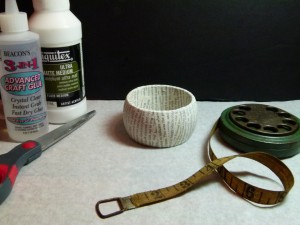
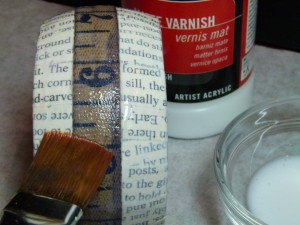

My vintage ruler & tape measure bracelets.
That’s a pretty “green” jewelry project. You can make lots of jewelry from a single vintage folding ruler or cloth tape measure. Pin It

